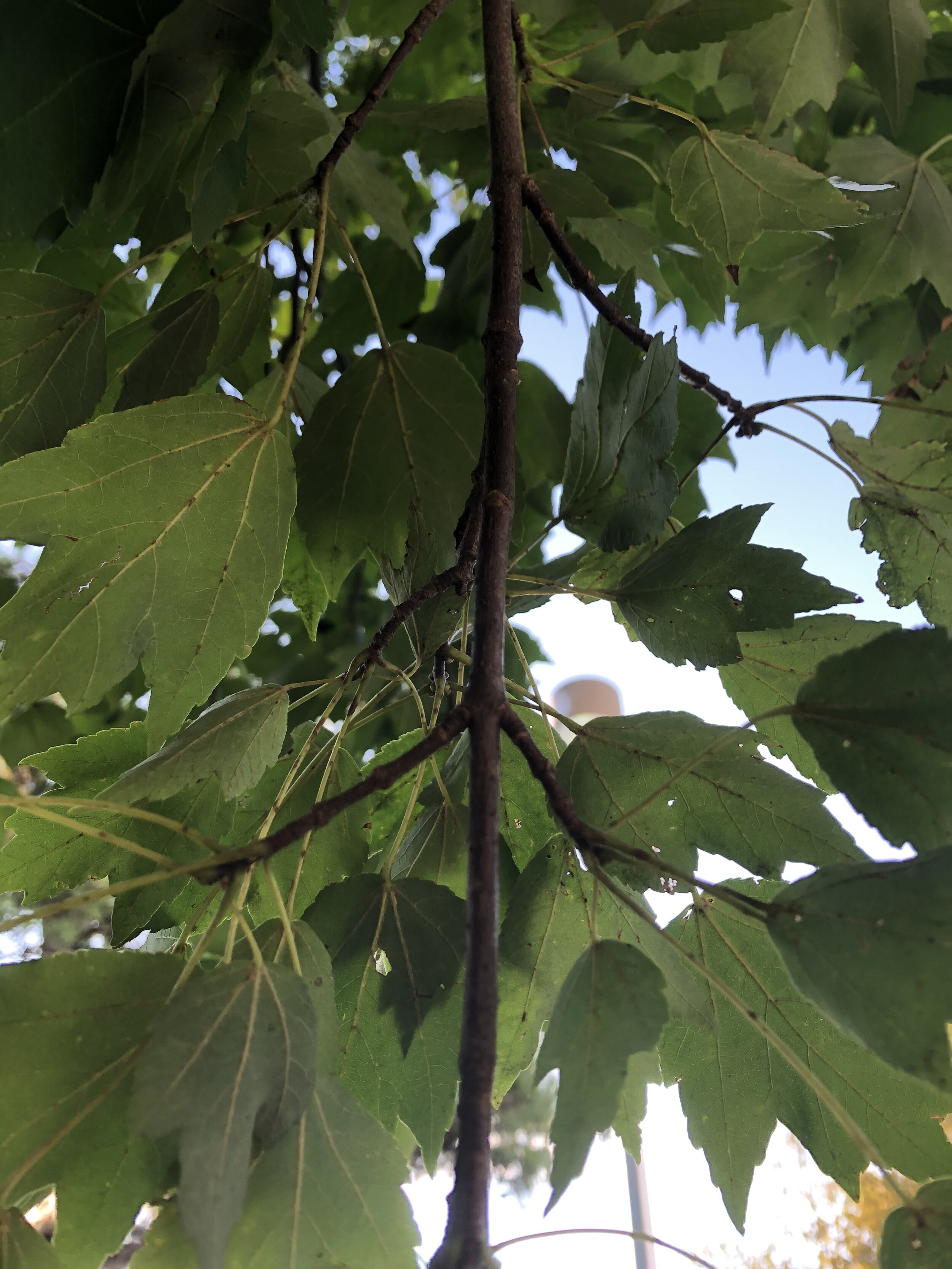Acer rubrum, Red Maple
/
By Robin Hawkins (2020)
CULTIVARS:
(Ketchum, 2019).
Armstrong maple (Acer rubrum ‘Armstrong’)
Autumn Flame red maple (Acer rubrum ‘Autumn Flame’)
Morgan maple (Acer rubrum ‘Morgon’)
Red Rocket maple (Acer rubrum ‘Northwood’)
Scarlet Sentinel maple (Acer rubrum ‘Scarsen’)
The overall form of Red maple near the SFA Ag pond. Photo taken by Robin Hawkins.
THE STORY:
Red Maple is native to the Americas and has become such a popular, widespread species all around the continent.
People love it for its beautiful fall foliage and how it attracts wildlife thanks to its seeds.
The lifespan of a red maple ranges from 80 to 100 years, but amazingly several old-timers are about 200 years old (National Wildlife Federation).
Although it is not the top provider in the syrup industry, the sap can be used for maple syrup (Jin, 2017).
State tree of Rhode Island (Factsjustforkids, 2020).
BIOLOGY:
Red maple belongs to the Aceraceae family.
Its native range can be found in Maine all the way down to Florida and towards South Texas (National Wildlife Federation).
The plant habit is classified as a medium-sized tree.
Red maple is a deciduous tree.
Red maple can grow up to 40 to 90 feet tall and have a diameter at breast height (DBH) of 2 to 10 inches or more depending on how tall it gets (4-H Forest Resources, 2015).
ID FEATURES:
Red maple leaves. Photo taken by Robin Hawkins.
Leaves can grow up to 2 to 4 inches long with 3 to 5 palmate lobes with serrated leaf margins that sit opposite on the twigs (Jin, 2017).
Flowers are unisexual (male and female) that form on separate sessile clusters.
Flowers will bloom from April to May.
The fruits are called samaras (a winged shaped fruit that is dispersed by wind) that are about 15 to 25 millimeters long (Jin, 2017).
The stems/ twigs appear to be red in color along the petiole with lenticels.
The buds are red that form in the fall.
Leaf scars are a V shape on the twig and contain three bundle scars.
GARDEN VALUE AND USE:
Sometime Red maple will have red petioles. Photo taken by Robin Hawkins.
Red maple can be used to make furniture, flooring, boxes, and musical instruments, but it is mainly used as an ornamental tree in many lawns and landscapes (Jin, 2017).
Grows best in USDA Zones 3 to 9.
It is used in horticulture because it is a fast and easy tree to grow. The only letdown is that they are susceptible to pests and diseases such as “Verticillium wilt, sapstreak, root rot” and many more (Butler, 2020).
Three prominent leave veins. Photo taken by Robin Hawkins.
Literature Cited
17, Angela Jin on April. “Red Maple Tree.” Red Maple | Yale Nature Walk, 17 Apr. 2017, naturewalk.yale.edu/trees/sapindaceae/acer-rubrum/red-maple-63.
“Red Maple Tree Facts.” Facts Just for Kids, www.factsjustforkids.com/plant-facts/tree-facts-for-kids/red-maple-tree-facts.html.
“Red Maple.” National Wildlife Federation, www.nwf.org/Educational-Resources/Wildlife-Guide/Plants-and-Fungi/Red-Maple.
Ketchum, Dan. “Red Maple Tree Varieties.” Home Guides | SF Gate, 22 Oct. 2019, homeguides.sfgate.com/red-maple-tree-varieties-63283.html.
“Maple Tree Diseases and How to Treat Them.” Lawnstarter, 17 July 2020, www.lawnstarter.com/blog/tree-care/maple-tree-diseases-how-to-treat-them/.
“SFRC : 4-H : Red Maple.” UF, www.sfrc.ufl.edu/extension/4h/trees/Red_maple/index.html.






